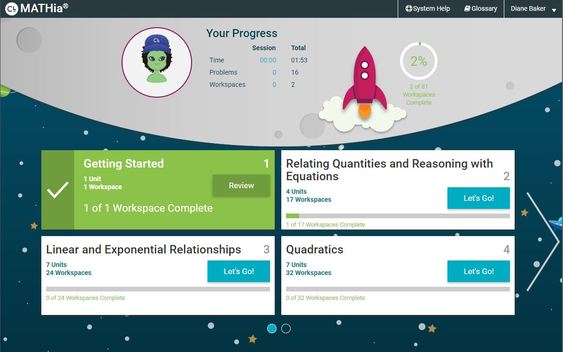
When it comes to math and a new (albeit improved) learning program, trying to help your child navigate math assignments can feel somewhat daunting. We’re used to worksheets and formulas, not math practice software! So how can parents most effectively support their child’s math studies at home? Nysmith’s goal is to make it as easy as possible for you to assist your child in the learning process. Now that our teachers are more familiar with the resources available to help you, they’ve come up with some ways to help you understand and assist your child’s continued practice at home with the Carnegie Learning math system.
Starting Monday, March 25, your child’s math teacher will be posting three documents in Google Classroom that will accompany each module and topic being covered in class. These documents are part of the Carnegie Learning Family Guide, which you can also access within the e-book in your child’s Carnegie Learning account. (You will either need your child to log on to their CL account to access the e-book or have your child’s log-in information to log on yourself.)
The first document will give you an introduction to the module and topic your child is currently learning. For those of you who aren’t familiar with CL’s terminology, a module is the broader or overriding math concept. The accompanying topics are those subtopics within that concept that are being covered. For instance, if your student is currently studying the Reasoning Algebraically module, a topic within that module might be, Algebraic Expressions or Two-Step Equations and Inequalities.
The second document will be the lesson summary, which will go over the main ideas reviewed within each lesson. Finally, the third document will go over essential ideas, giving parents a look at each individual idea within a topic. These documents will be made available to you each time your child’s class moves into a new topic. In addition, CL provides even more online resources in their Home Connection supplement you can find here. This supplement provides links to multiple sites that can give additional math practice to students outside of CL. It also has a “Study Skills” section for parents who may need ideas on how to help their children study at home. For a more in-depth look at the Middle School Math Series, CL also provides a “sampler” for parents to look thorough. You can access that document here.
Nysmith Upper School Director, Nora Webb, also offers some helpful advice when it comes to extending help to your child at home. She says, “In any situation, the best help a parent can be is to have your child explain to you what they are working on. Just verbalizing what they’re working on can sometimes help children figure out the answer.” It’s also important to note that sometimes, just providing the right structure, time, and space for a child to study can make all the difference in the world. Webb says that ultimately, students shouldn’t be struggling to grasp a concept. “If they truly don’t understand a concept, they need to come talk to the teacher. The teacher is in a much better position to help the student than the parent.”
Ann Dolin of Educational Connections and author of Homework Made Simple echoes the same advice to parents. She says, “I remember as teacher, I would have kids come in with absolutely perfect homework, and I’d wouldn’t always know that it was a struggle for them the night before because it was all done beautifully. Every math problem doesn’t need to be correct, every spelling problem doesn’t need to be just right. They need to turn in their own work so the teacher knows how they are progressing.”
In the end, our goal as educators is make sure students are set up for success now and in the future by truly understanding concepts inside and out. By creating a solid foundation of support between home and school, our children are bound for success in math and much more.
